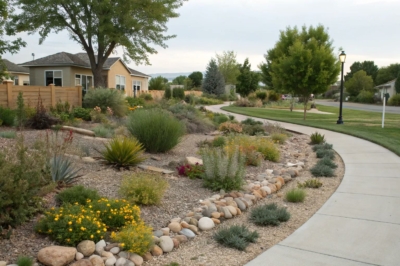1. Embrace Drought-Tolerant Plants
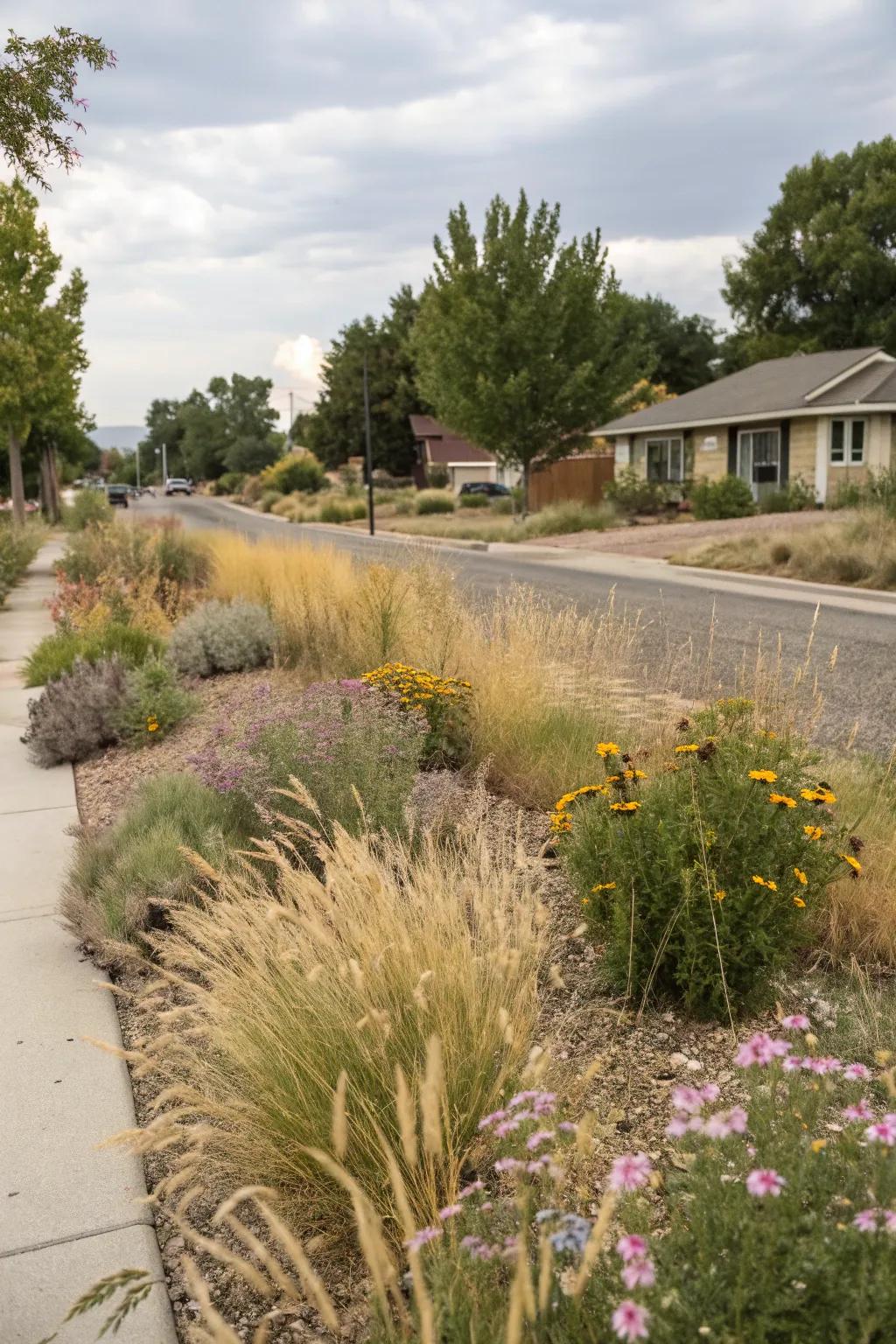
Consider using drought-tolerant plants like decorative grasses and hardy perennials that thrive in Utah’s dry climate. I’ve found that a mix of these plants can create a lush yet sustainable strip along the curb.
Consider these options:
- Drought-Tolerant Grass Seeds: Transform your curb appeal with easy-to-grow, low-maintenance drought-tolerant grass seeds today.
- Hardy Perennial Plant Set: Revitalize your garden with vibrant and tough perennials that thrive in dry conditions.
- Water-Saving Drip Irrigation Kit: Efficiently water your drought-tolerant plants with this easy-to-install drip irrigation kit.
2. Create a Rock Garden
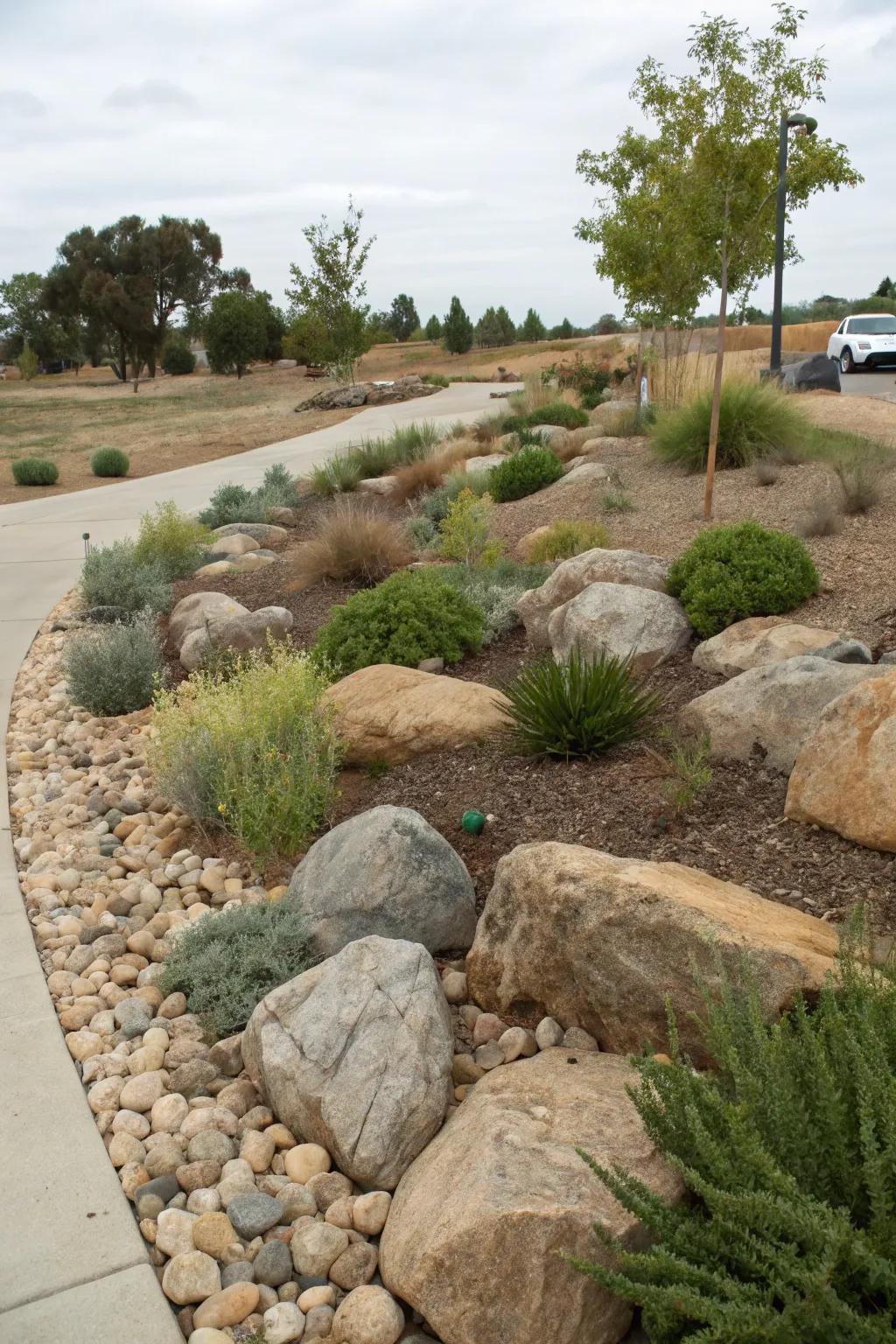
Design a rock garden for a unique and low-water landscape option. I enjoy the creative process of arranging rocks and drought-tolerant plants for a natural look.
A few choices to try:
- Assorted Decorative Garden Stones: Transform your landscape with these beautifully textured garden stones. Perfect for eco-friendly designs.
- Drought-Tolerant Plant Collection: Create a thriving, low-maintenance garden with these hardy, drought-tolerant plant varieties.
- Garden Weed Barrier Fabric: Keep your rock garden pristine by preventing weeds with durable, easy-to-install barrier fabric.
3. Try Edible Plants
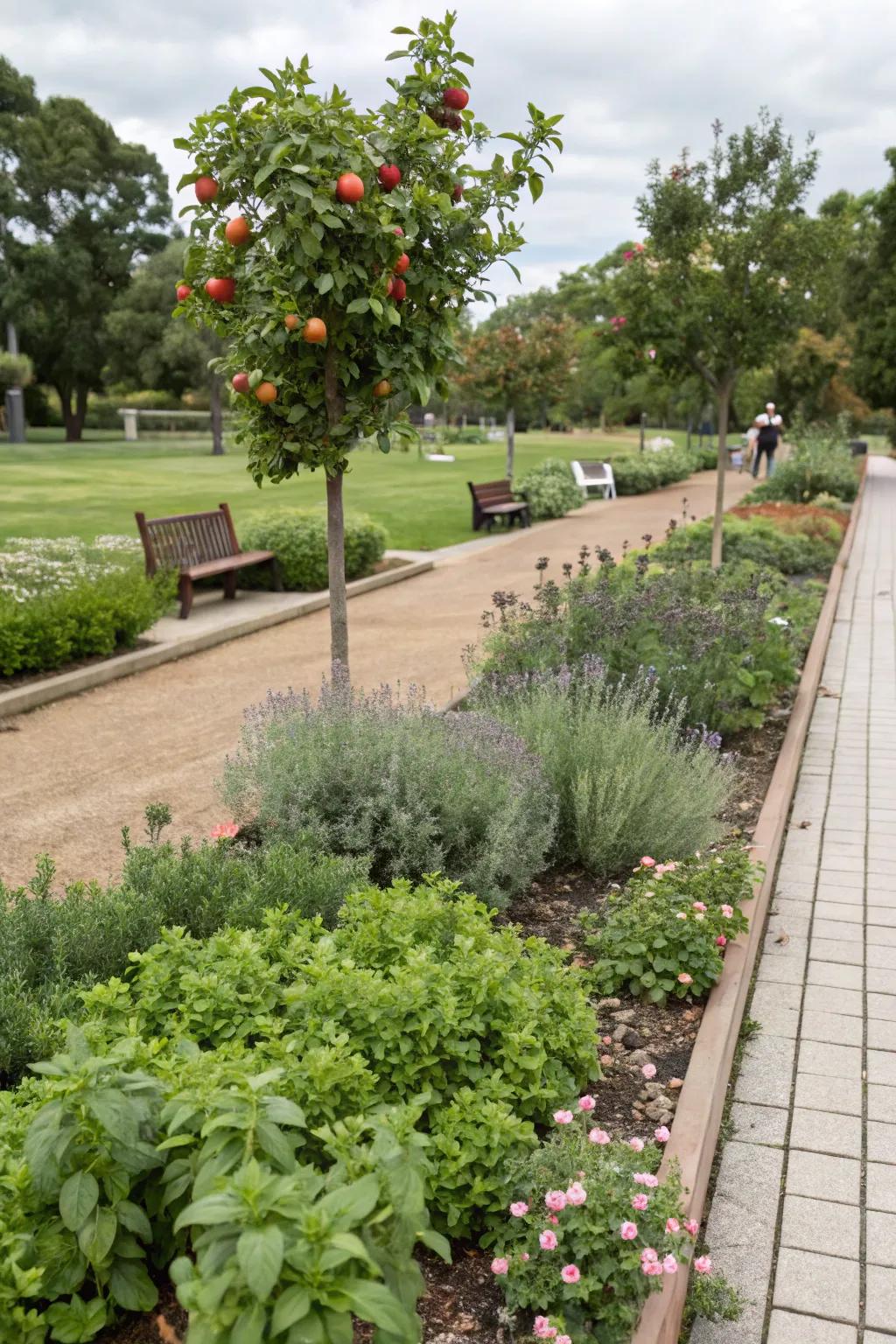
For a productive twist, plant edible plants like herbs or dwarf fruit trees. It’s a fun way to combine aesthetics with practicality, and I love picking fresh herbs right from my park strip.
You might like:
- Herb Garden Starter Kit: Start your own herb garden with this kit, perfect for fresh, handy ingredients anytime.
- Dwarf Fruit Tree Starter Pack: Grow your own fruit with dwarf trees, ideal for limited spaces and easy to maintain.
- Organic Potting Mix: Use organic potting mix to nourish your plants naturally for fruitful growth in your garden.
4. Try Raised Planting Beds
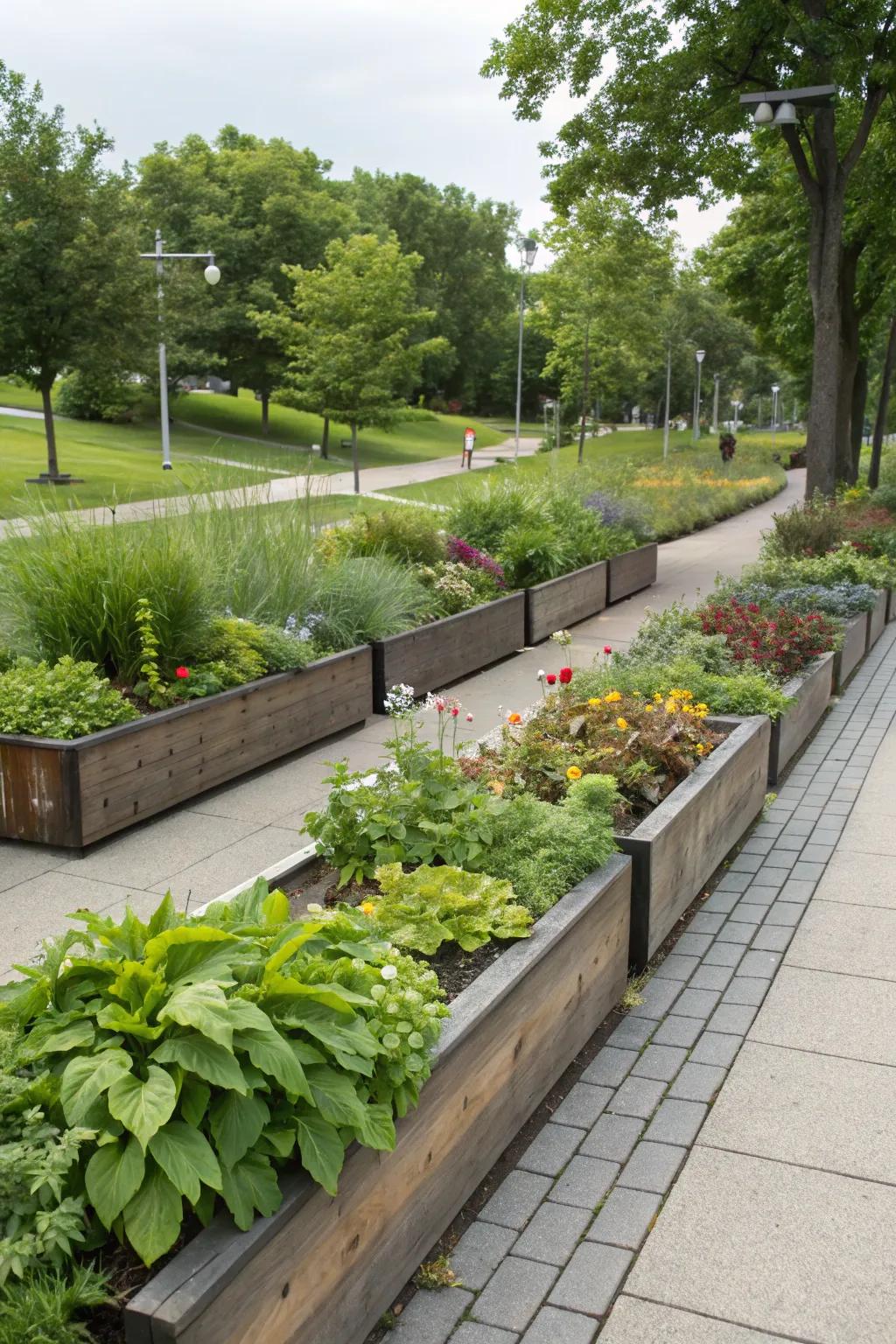
Use raised planting beds to enhance drainage and add height to your design. I love how this approach makes it easier to garden and adds a unique look.
Maybe worth checking out:
- Wooden Raised Garden Bed Kit: Elevate your garden with a wooden bed kit for exceptional drainage and aesthetic charm.
- Vegetable Planter Box: Grow your own vegetables effortlessly with these dedicated planter boxes for optimal conditions.
- Outdoor Planter with Trellis: Enhance your space with planters that provide sturdy growth support for climbing plants.
5. Create Colorful Plant Arrangements
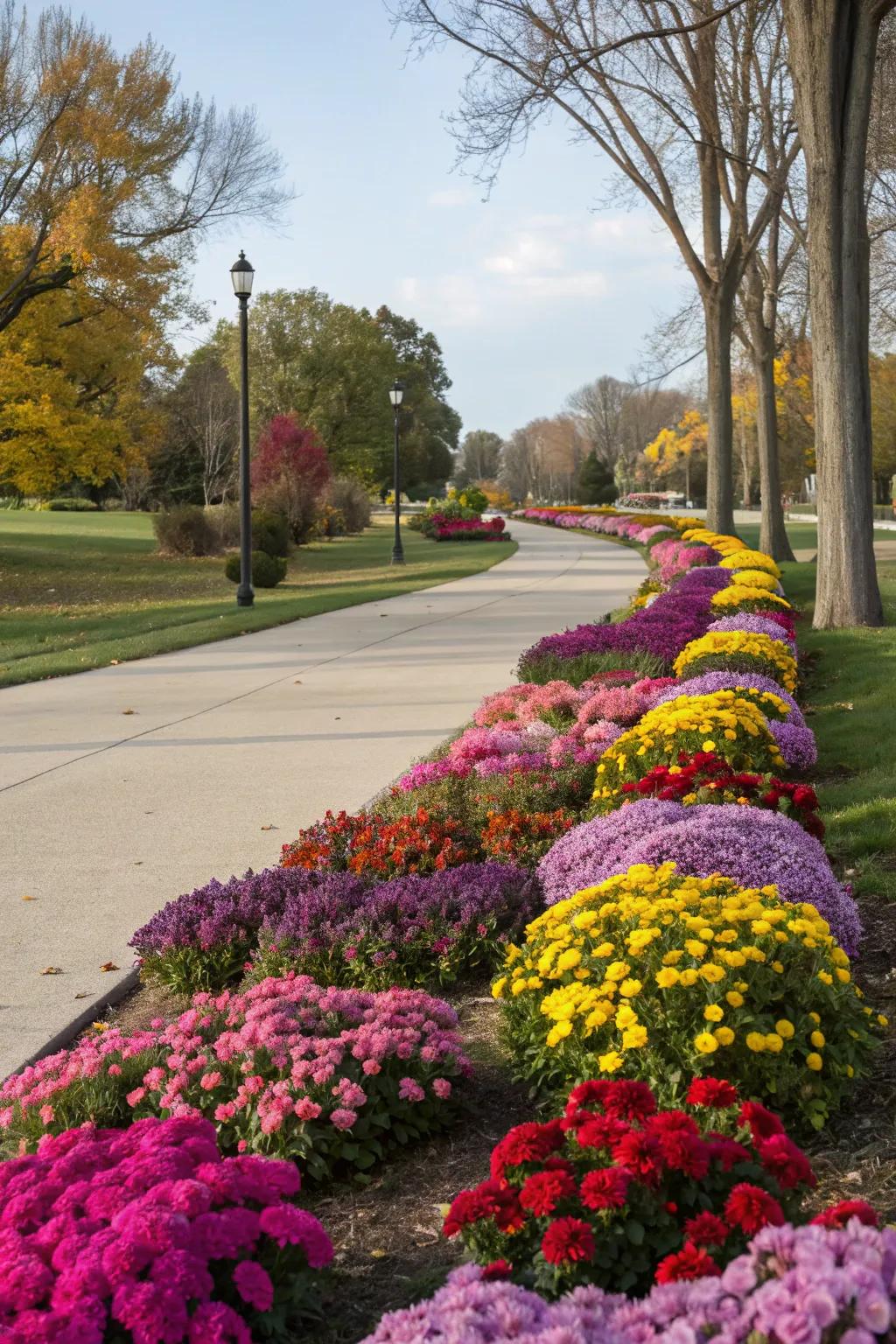
Mixing plants that bloom in different colors and seasons can keep your park strip visually appealing year-round. I always enjoy planning these arrangements to ensure there’s something blooming throughout the year.
You might give these a try:
- Assorted Perennial Flower Seed Mix: Enjoy a diverse array of blooms with this mixed perennial seed pack for vibrant year-round color.
- Garden Soil for Flower Beds: Enhance your plant growth with nutrient-rich garden soil designed for colorful flower beds.
- Outdoor Solar Garden Lights: Illuminate your colorful arrangements by adding solar-powered lights for an enchanting nighttime display.
6. Integrate a Mini Wildflower Meadow
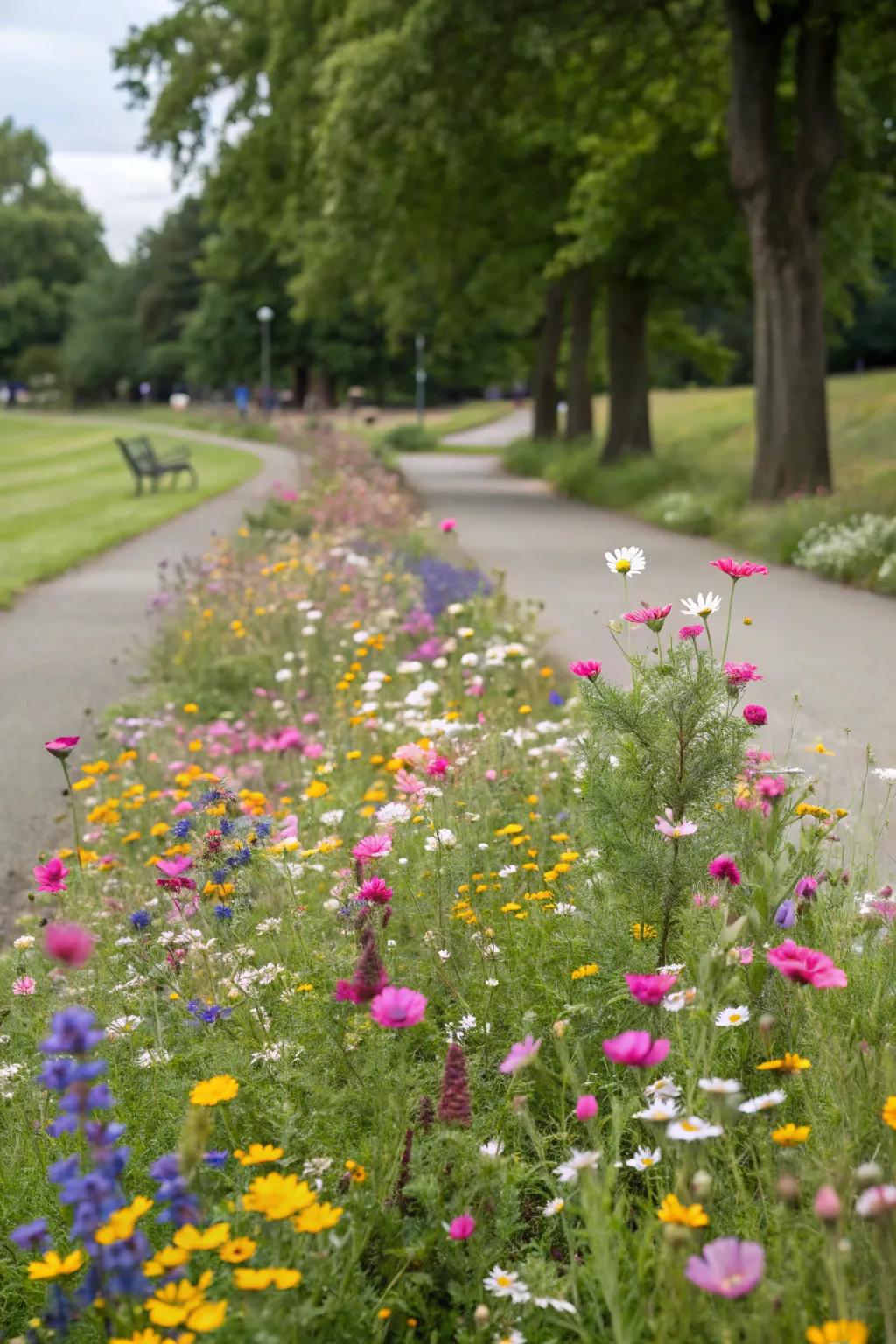
Plant a mini wildflower meadow for an unexpected burst of color and a habitat for pollinators. It’s a delightful surprise for visitors and a joy to watch the blooms change with the seasons.
Products that could assist:
- Wildflower Seed Mix: Transform your strip with vibrant wildflowers. Attract pollinators and enjoy seasonal color changes.
- Pollinator Garden Starter Kit: Support pollinators and ensure a thriving mini meadow. Easy to plant and maintain.
- Soil pH Test Kit: Ensure optimal growth for wildflowers by checking and balancing soil conditions effectively.
7. Mix Textures and Materials
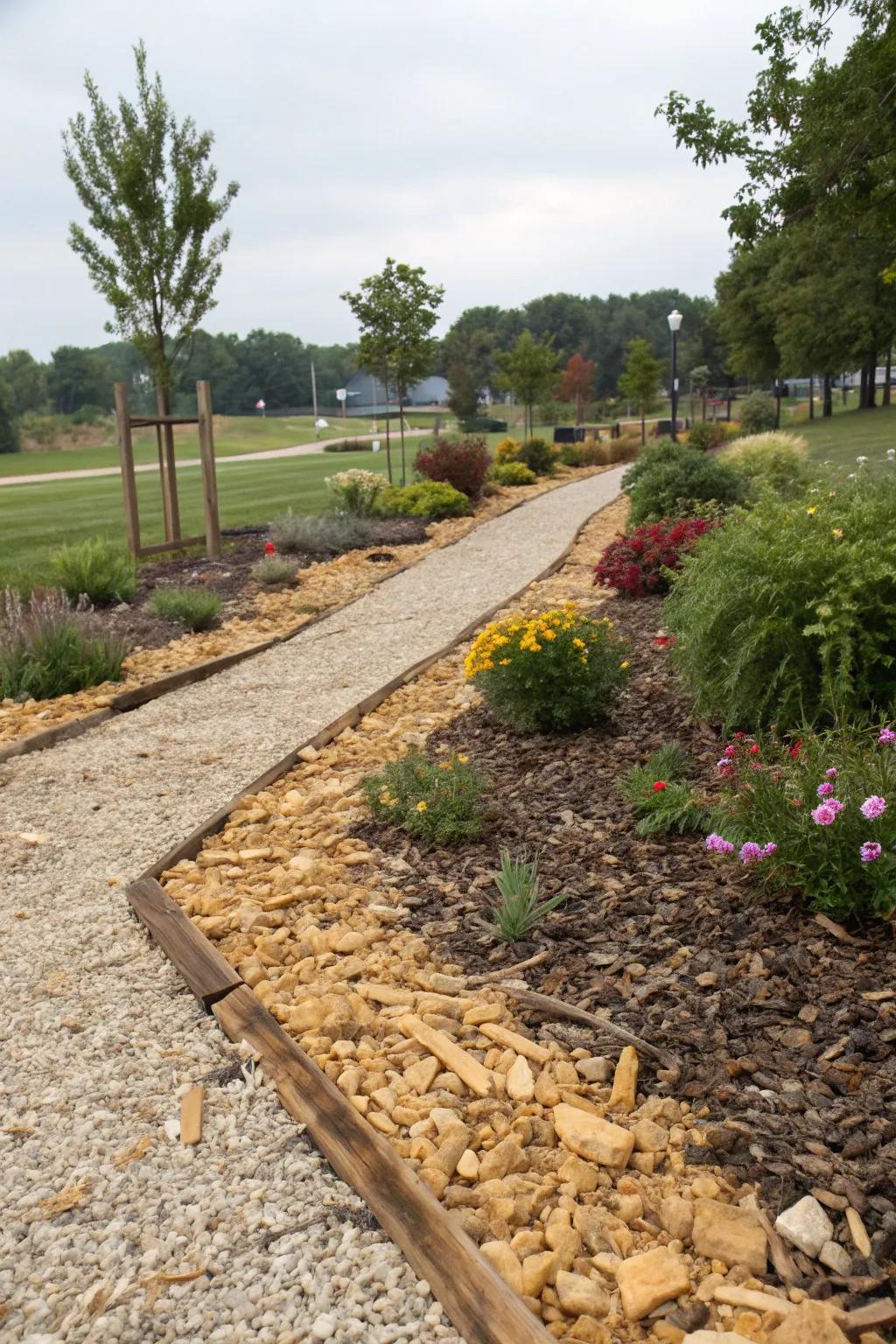
Combine different textures and materials for a rich, layered effect. I often mix gravel, wood chips, and plant textures to create a dynamic and engaging landscape.
Check if these fit your needs:
- Decorative Gravel Set: Enhance your landscape’s texture with natural decorative gravel. Create appeal by layering diverse elements.
- Natural Wood Chips Mulch: Add warmth and richness with wood chips, enhancing plant health and visual charm.
- Textured Plant Variety Pack: Diversify your landscape’s texture with a variety of plants, ensuring vibrant and lush scenery.
8. Utilize Rocks and Gravel
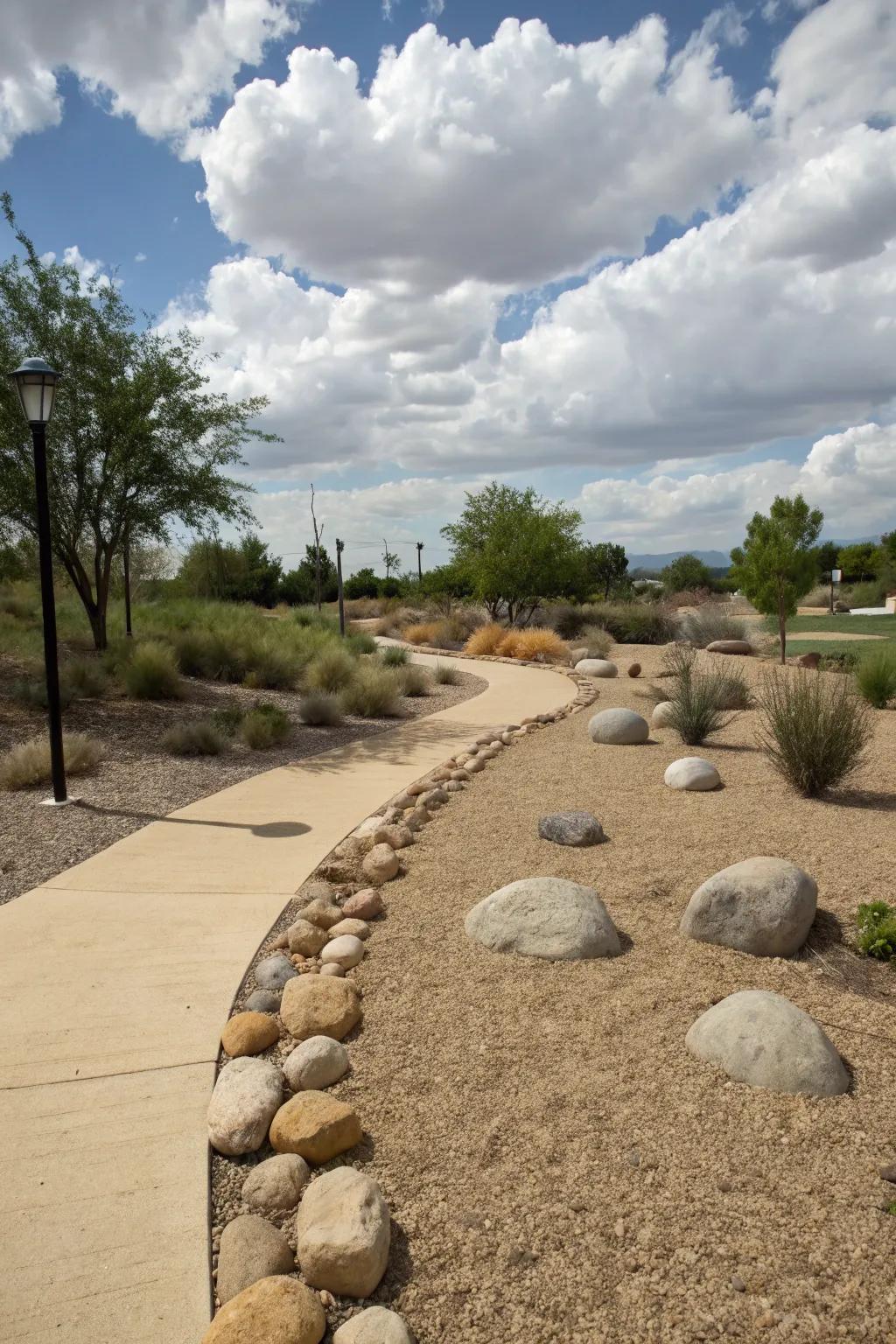
Incorporate rocks and gravel for decoration and water efficiency, offering a desert-inspired aesthetic. I’ve used these elements to create a low-maintenance, stylish landscape.
A few relevant products:
- Decorative Garden Gravel: Enhance your landscape with decorative garden gravel, offering a stylish and low-maintenance solution.
- Natural River Rocks: Create a natural desert aesthetic using varied sizes of natural river rocks in your garden.
- Landscape Edging Stones: Define pathways and garden borders effortlessly with durable landscape edging stones.
9. Incorporate Water Features
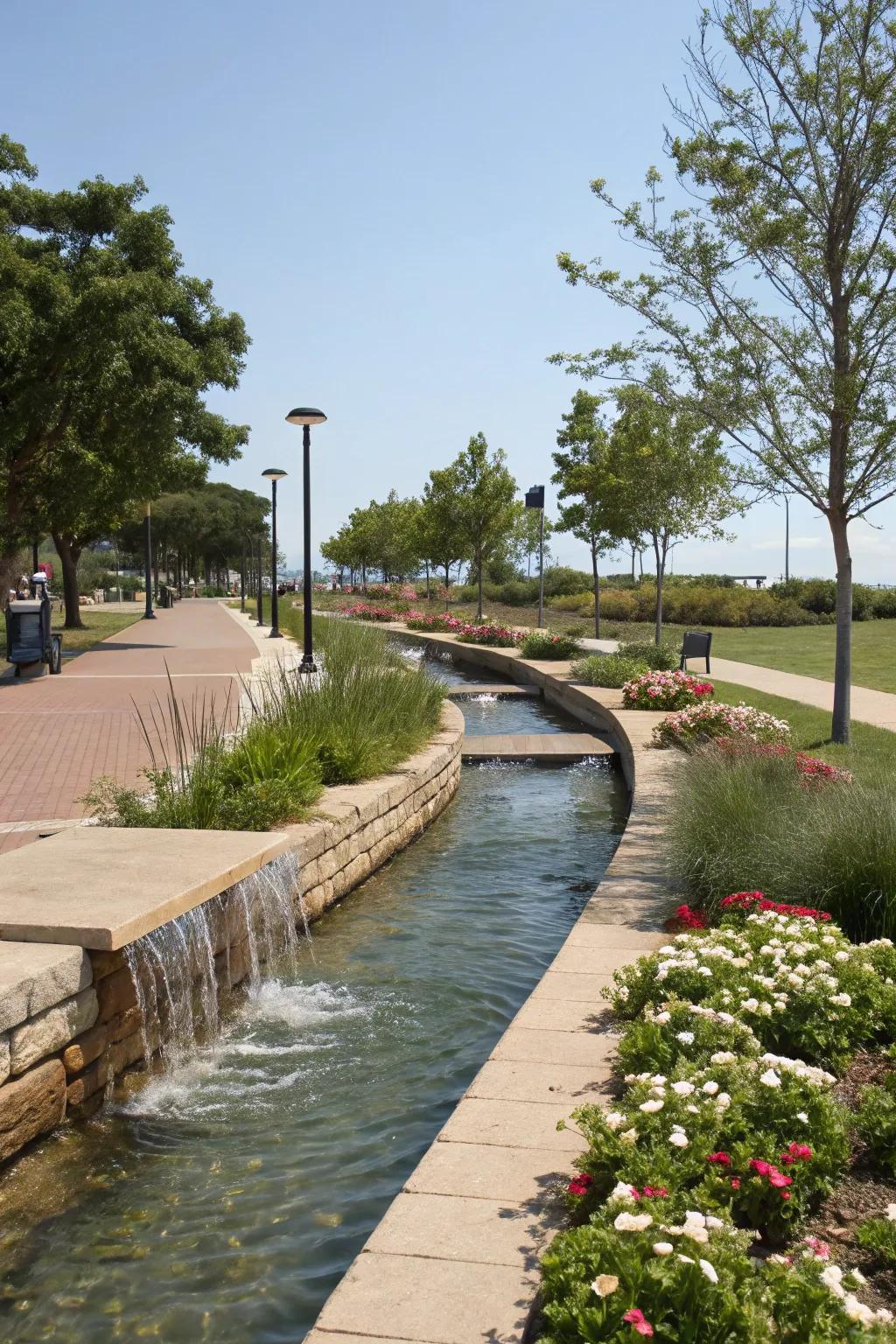
Add a small water feature for a soothing sound and visual appeal. Even a tiny fountain can add a refreshing element to the landscape.
A few helpful options:
- Outdoor Solar Water Fountain: Enhance your garden with a solar fountain, adding soothing, eco-friendly water sounds effortlessly.
- Decorative Waterfall Spillway Kit: Create a stunning waterfall effect that complements any park strip landscape beautifully and naturally.
- Self-Contained Water Feature Basin: Install a versatile water basin for an instant striking water feature in your landscape design.
10. Experiment with Seasonal Planting
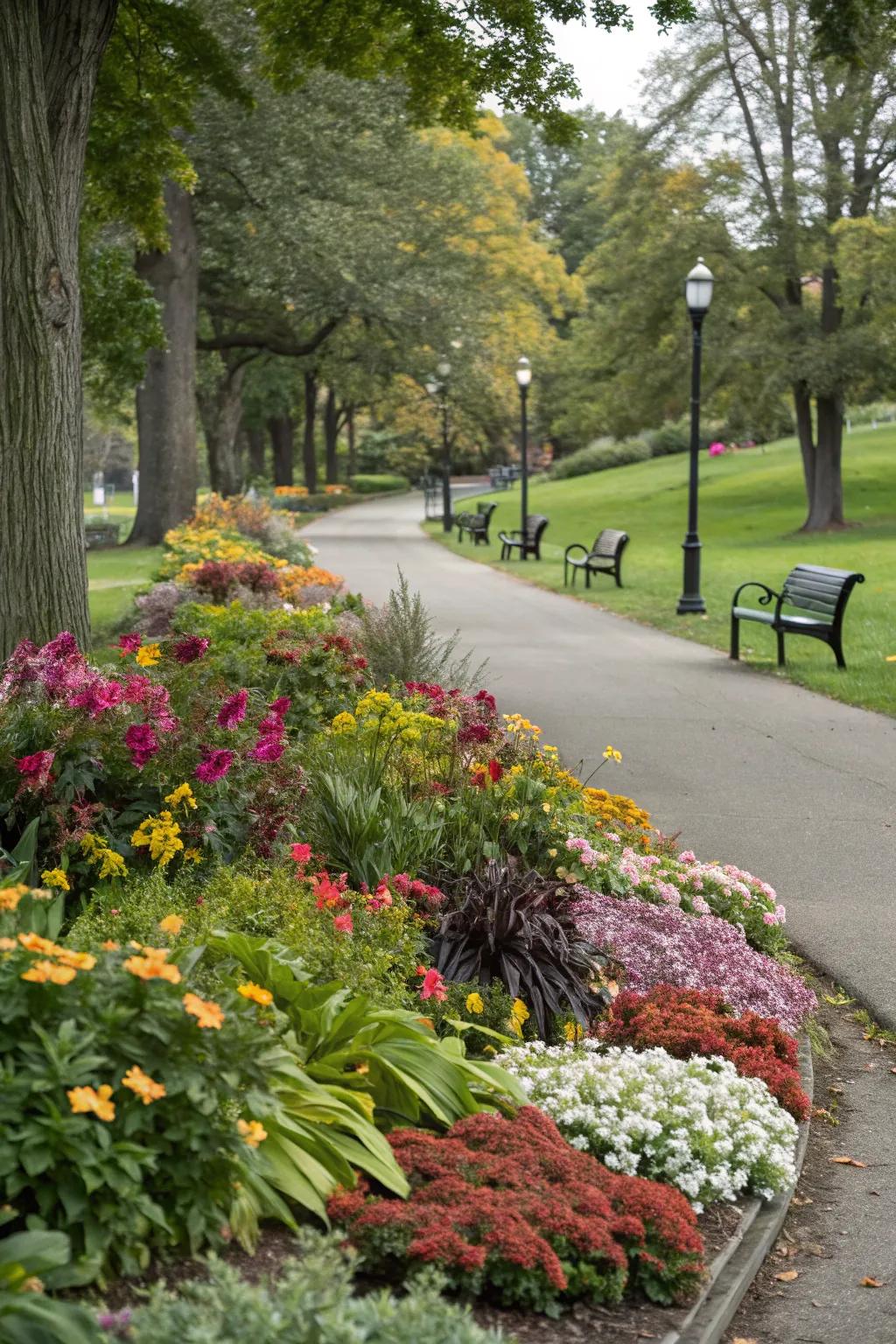
Plan for seasonal interest by selecting plants that bloom at different times of the year. This approach keeps your park strip dynamic and engaging throughout the seasons.
Might be a good match:
- Perennial Flower Seed Mix: Transform your park strip with perennials that ensure blooms throughout the year.
- Outdoor Garden Spotlight: Highlight seasonal blooms even at night with versatile outdoor garden spotlights.
- Soil Moisture Meter: Ensure optimal plant growth by monitoring soil moisture levels effectively.
11. Incorporate Native Plants
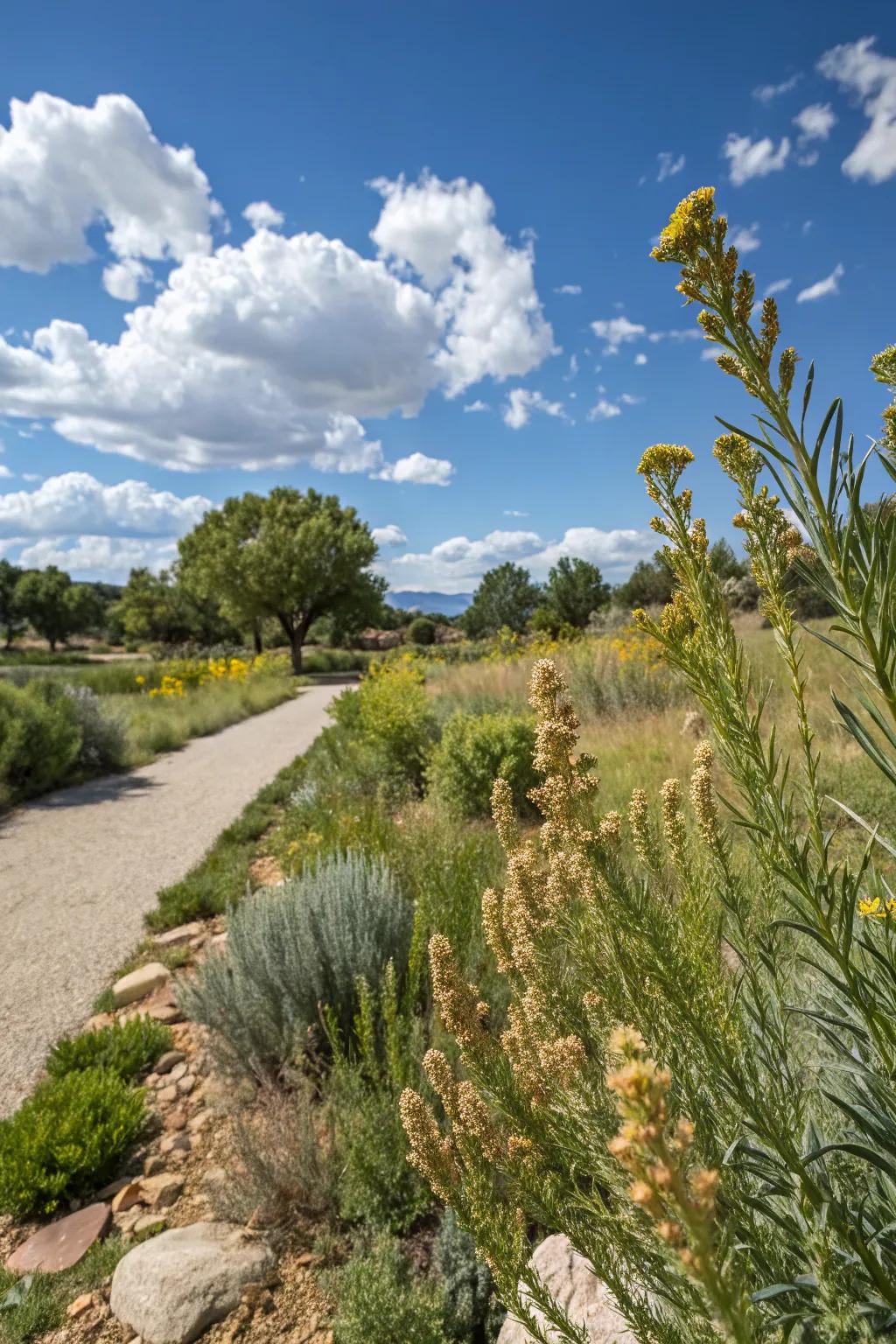
Choose native plants to enhance resilience and water conservation. In my experience, these plants are well-adapted to local conditions and require less maintenance.
Check these products out:
- Native Plant Seed Mix: Transform your garden with this seed mix, perfect for low-water landscapes in Utah.
- Drip Irrigation Kit: Optimize water usage in your native plant garden with this efficient drip irrigation system.
- Soaker Hose System: Ensure even watering for your native plants with this simple and effective soaker hose system.
12. Add Vibrancy with Mulching
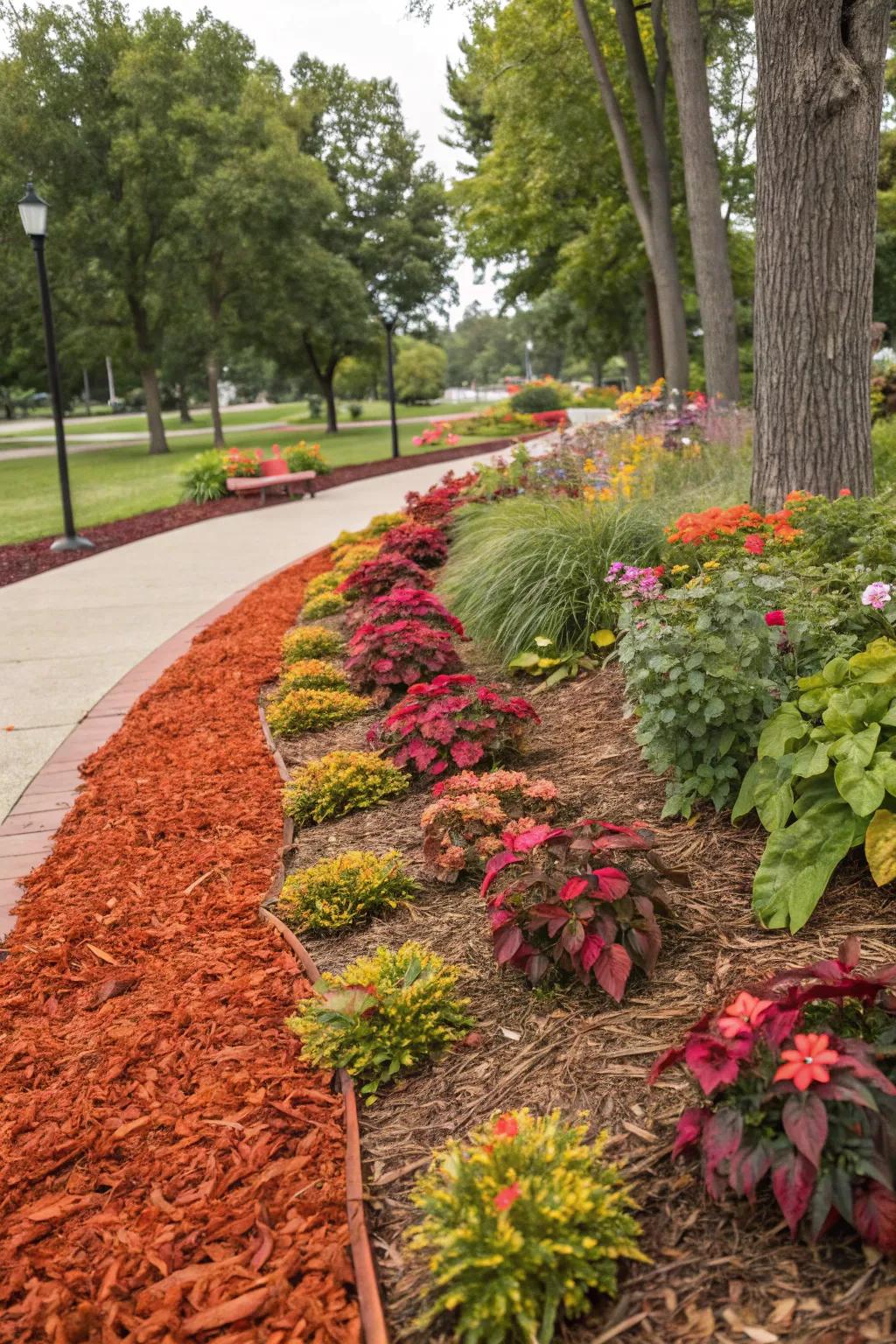
Using mulch not only conserves water but also adds a pop of color and texture to your landscape. I love how the rich, earthy tones of mulch complement the natural greenery.
Some ideas to consider:
- Colored Garden Mulch: Enhance your garden’s appeal with vibrant mulch colors, adding texture and contrast effortlessly.
- Natural Wood Mulch: Preserve soil moisture and promote plant health with sustainable, rich-toned wood mulch.
- Rubber Mulch Nuggets: Choose durable rubber mulch for lasting color that resists fading and harsh weather.
13. Opt for Low-Maintenance Designs
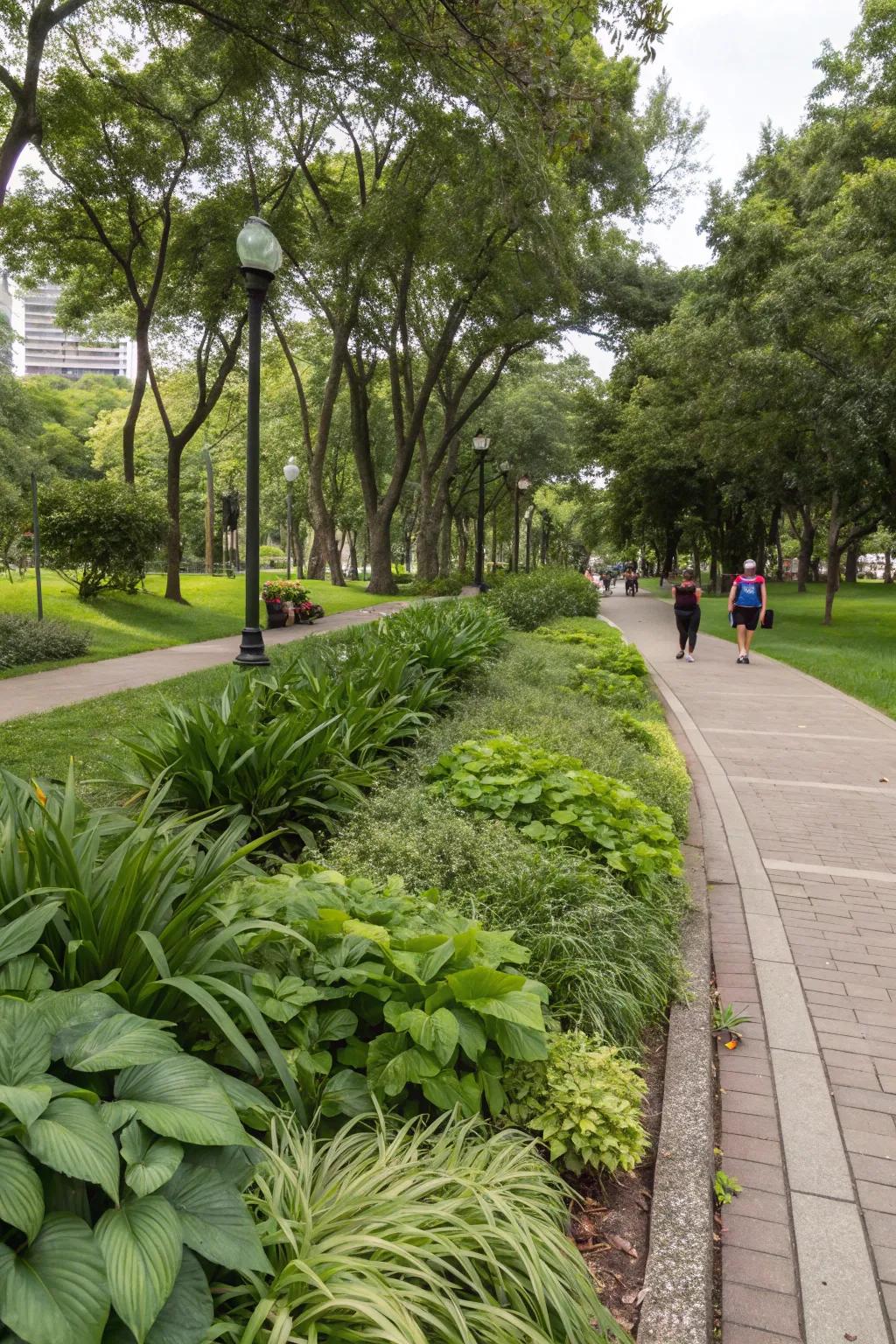
Choose designs that require minimal upkeep, focusing on hardy, low-maintenance plants. My busy schedule appreciates this approach, as it keeps the garden looking great without constant care.
Useful items to consider:
- Drought-Tolerant Perennial Seeds: Transform your garden with drought-tolerant seeds that thrive with minimal watering and care.
- Automatic Drip Irrigation Kit: Simplify your garden upkeep with an automatic drip kit, perfect for hassle-free watering.
- Garden Mulch for Weed Control: Keep your garden beautiful and weed-free with easy-to-apply, natural garden mulch.
14. Define with Edging and Borders
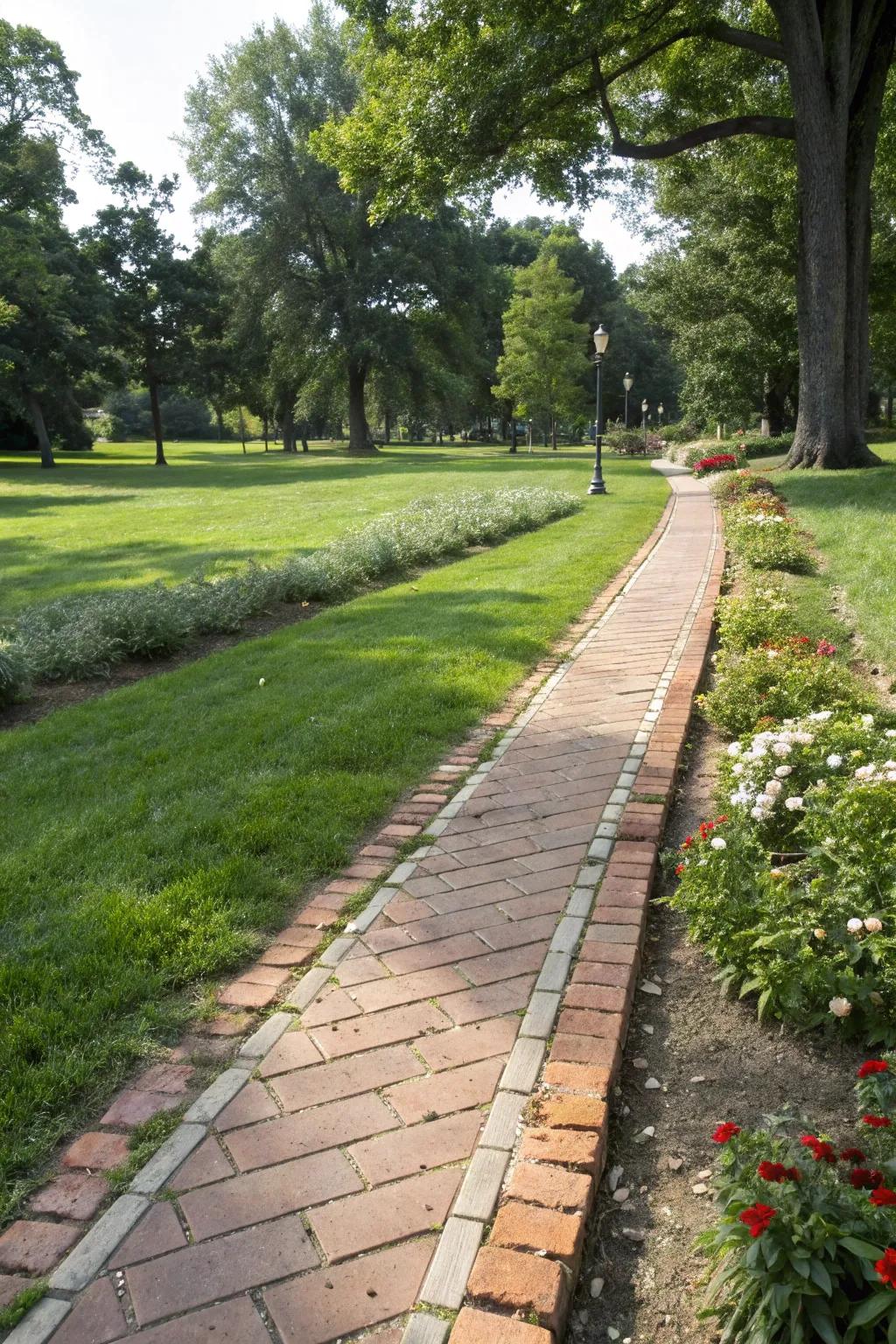
Use bricks or metal to create clean, defined edges that separate your park strip from the sidewalk. I find this simple addition instantly elevates the overall look.
Items that may come in handy:
- Brick Edging Stones: Enhance your walkway with durable brick edging stones for a classic and clean look.
- Metal Landscape Edging: Install metal landscape edging to create sleek, modern lines along your park strip effortlessly.
- Garden Border Edging Spikes: Secure and define your edging with easy-to-install garden border edging spikes.
15. Utilize Permeable Paving
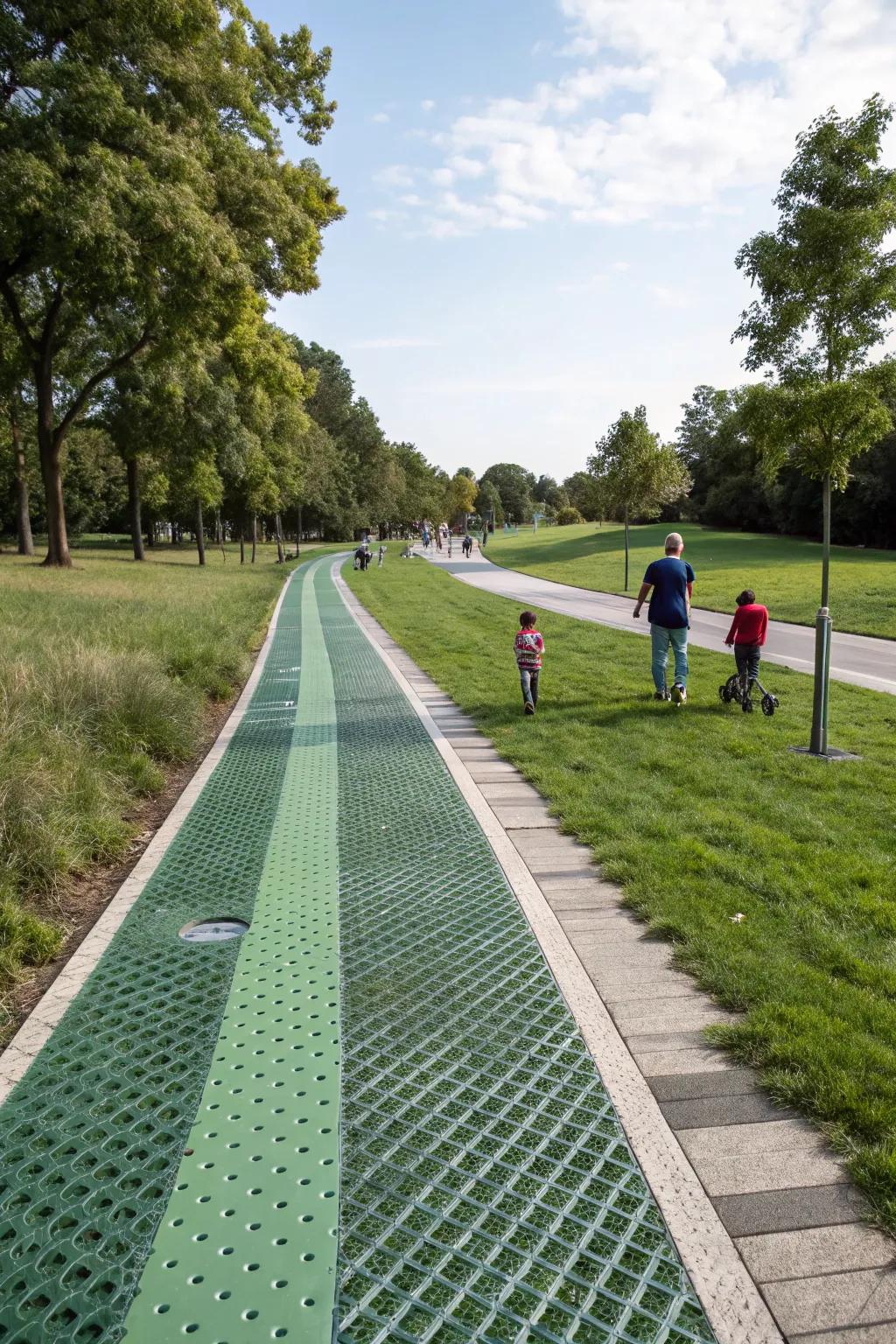
Opt for permeable paving to manage water efficiently and reduce runoff. I’ve found it an eco-friendly choice that complements the natural landscape beautifully.
Explore these options:
- Permeable Paving System Grids: Upgrade your landscape with these easy-to-install grids, reducing runoff and enhancing aesthetics.
- Water-Permeable Pavers: Choose eco-friendly pavers for effective water management, blending seamlessly with the natural environment.
- Permeable Pathway Kits: Construct a sustainable pathway that manages stormwater runoff while looking visually appealing in your garden.
16. Incorporate Walkways and Stepping Stones

Add practical and decorative walkways with stepping stones for easy access. This not only protects the plants but also gives the landscape a structured appearance.
May just do the trick:
- Outdoor Stepping Stones: Enhance accessibility and aesthetics with these durable stepping stones for your garden path.
- Garden Pathway Pavers: Create a structured walkway with these weather-resistant pavers, ideal for any garden landscape.
- Decorative Gravel: Improve drainage and add charm to your walkway with versatile decorative gravel.
17. Add Hardscape Features
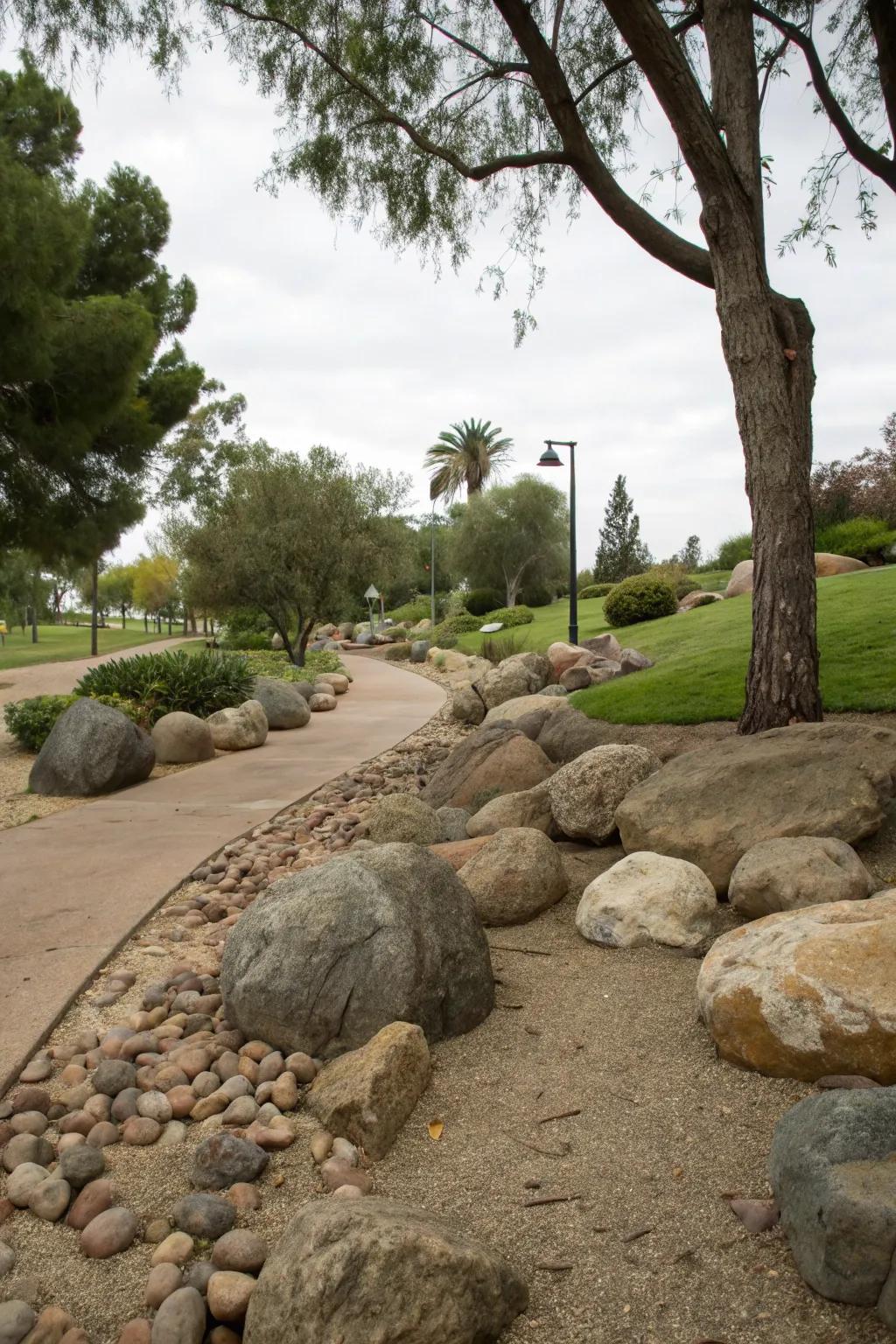
Consider adding hardscape elements like decorative rocks or boulders to your park strip. I love how these features can serve as focal points and add texture to the landscape.
These products might be useful:
- Decorative Garden Boulders: Transform your landscape with natural boulders to create striking, textured focal points instantly.
- River Rock Landscaping Stones: Enhance your park strip with smooth river rocks for a clean and elegant look effortlessly.
- Landscape Edging Stones: Define your garden space with durable edging stones to keep your design neat and organized.
18. Design with Symmetry

Use symmetry in your planting design for a formal, balanced look. I find that symmetrical arrangements can create a sense of harmony and order in a small space.
These products might help:
- Artificial Boxwood Topiary Trees: Enhance your garden’s formal balance with these elegantly crafted artificial topiary trees.
- Decorative Stone Edging: Create structured boundaries with decorative stone edging, perfect for neat, symmetrical outlines.
- Rotating Sprinkler System: Ensure even water distribution with a rotating sprinkler system for symmetrical garden maintenance.
19. Incorporate Vertical Elements
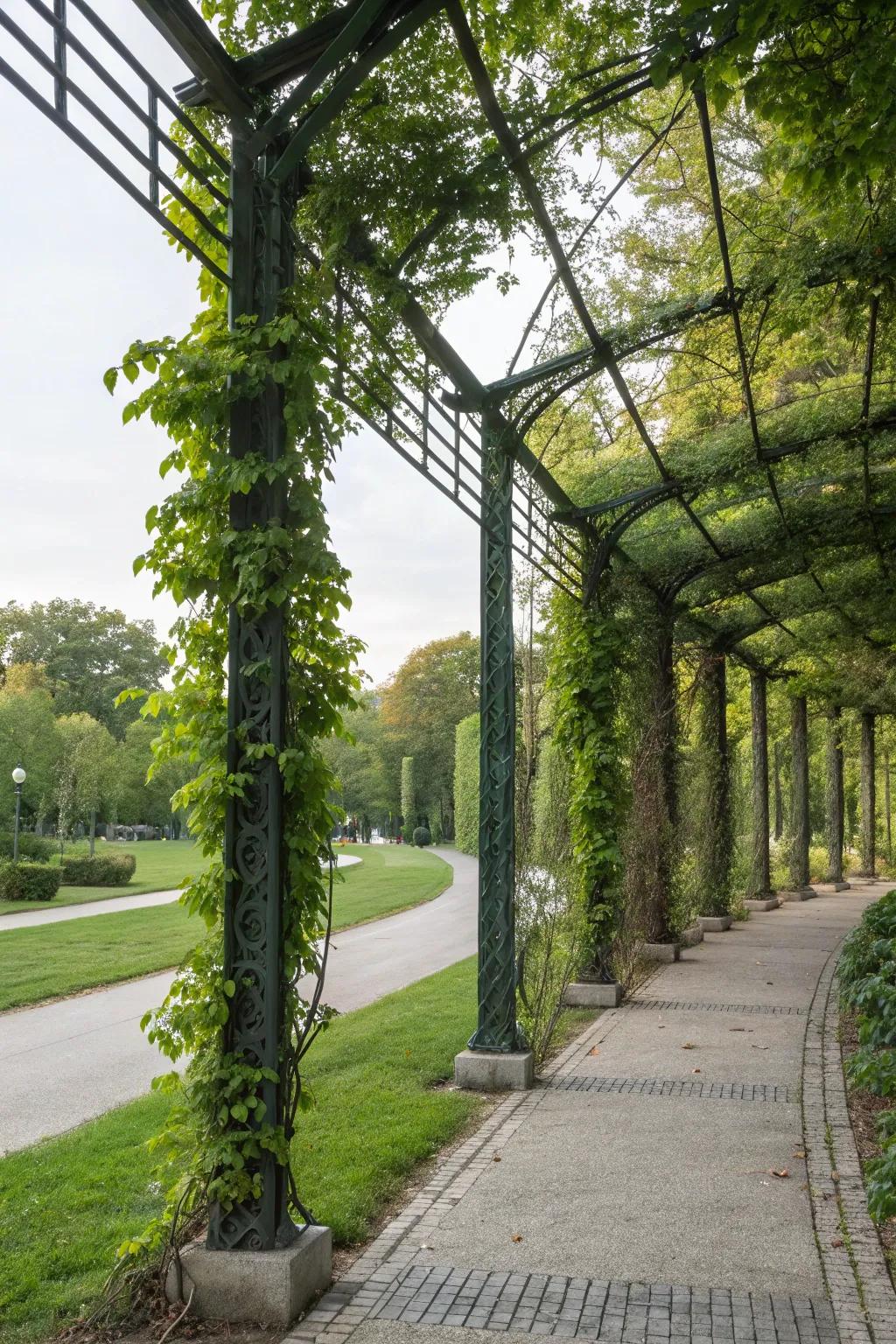
Introduce vertical elements like trellises or small obelisks to draw the eye upward. This technique adds dimension and can make even a narrow strip feel more spacious.
A few suggestions:
- Decorative Garden Trellis: Enhance your space with a decorative trellis, perfect for climbing plants and adding height.
- Outdoor Metal Obelisk: Introduce structure with a sleek metal obelisk, ideal for supporting and training taller plants.
- Garden Arch with Planter Supports: Create an elegant entryway with a garden arch, complete with planter supports for added greenery.
